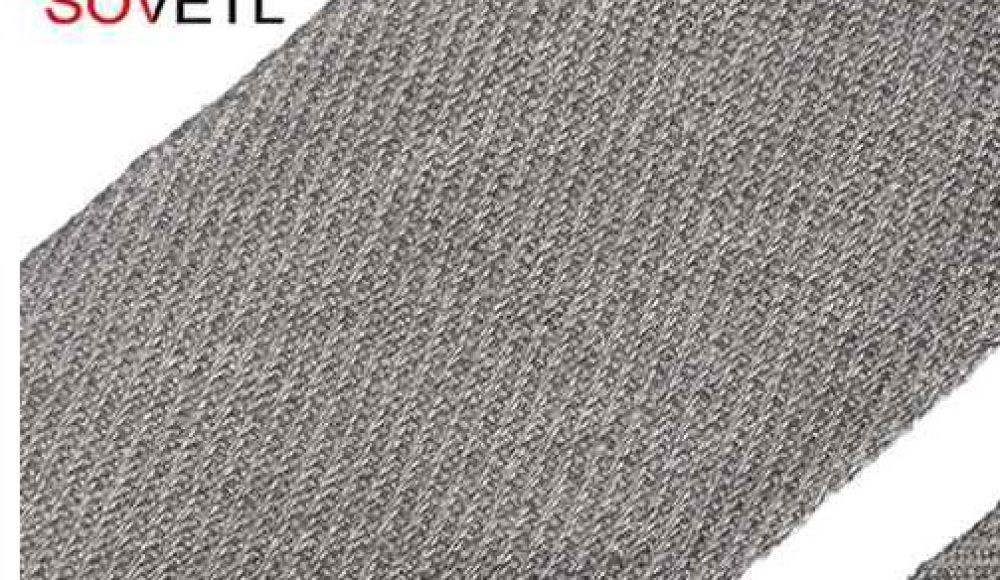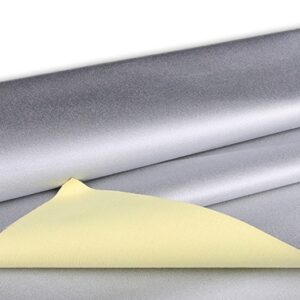Introduction: Why Stainless Steel Webbing Matters
Stainless steel webbing is a critical component in many high-demand applications, from filtration systems and architectural facades to chemical processing and marine engineering. When it comes to selecting the right webbing material, 316L stainless steel webbing stands out as one of the most durable and corrosion-resistant options available.
But with a wide range of materials, weaves, and finishes on the market, how do you choose the right stainless steel webbing for your project? This guide will walk you through the key factors to consider when purchasing 316L metal webbing, helping you make a smart, cost-effective decision — especially when working with a trusted manufacturer like Sovetl.
1. Material Grade: Choose the Right Alloy for the Job
Not all stainless steels are created equal. The most common grades used for metal webbing are 304 and 316/316L.
-
304 Stainless Steel is economical and suitable for indoor or non-corrosive environments.
-
316 Stainless Steel, and especially 316L stainless steel webbing, offers superior corrosion resistance — ideal for marine, chemical, and outdoor applications.
🔍 Why 316L?
The “L” in 316L stands for “low carbon,” which means it is more resistant to corrosion and intergranular attack after welding. This makes 316L metal webbing an excellent choice for:
-
Saltwater exposure
-
Harsh chemical environments
-
High-temperature settings
✅ Pro Tip: If your application involves extreme moisture, salt, or chemicals, always opt for 316L stainless steel webbing.
2. Weave Type and Mesh Count
The weave pattern affects the strength, flexibility, and filtration capability of the webbing.
Common weave types include:
-
Plain weave – uniform structure, good for general applications.
-
Twill weave – stronger, more flexible.
-
Dutch weave – excellent for fine filtration.
Mesh count refers to how many wires exist per inch and directly influences:
-
Airflow
-
Filtration precision
-
Strength and rigidity
When working with Sovetl, you can customize the weave pattern and mesh count to match your exact project specifications.
3. Wire Diameter and Thickness
The diameter of the wire used in the webbing determines tensile strength, durability, and even cost.
-
Thicker wires = more strength but less flexibility.
-
Finer wires = better filtration but lower mechanical strength.
Make sure to balance durability with flexibility based on your use case:
-
For industrial filters, finer wire diameters with higher mesh counts may be optimal.
-
For architectural or mechanical reinforcements, thicker wire diameters ensure longevity.
4. Surface Finish and Tolerance
Surface finish impacts both aesthetics and function:
-
Bright Annealed: Clean and corrosion-resistant.
-
Matte / Brushed: Better for architectural or visible applications.
-
Electropolished: Ideal for sanitary or food-grade uses.
Also confirm manufacturing tolerances, especially if your project requires high precision.
✔ Sovetl provides a wide range of finishes for stainless steel webbing, and can meet strict tolerances required by medical, aerospace, or defense sectors.
5. Corrosion Resistance and Application Suitability
One of the key reasons to choose 316L stainless steel webbing is its corrosion resistance, particularly in:
-
Saltwater or marine environments
-
Chemical processing plants
-
Outdoor architectural projects
-
Cleanrooms and sterile facilities
316L is also non-reactive, making it suitable for medical, pharmaceutical, and food-grade applications.
6. Customization Options and OEM Service
Every project has unique requirements. A reliable supplier like Sovetl offers:
-
Custom mesh sizes and sheet dimensions
-
OEM and ODM capabilities
-
Fast prototyping and batch production
-
Expert design support for industry-specific needs
Whether you need cut-to-size sheets, rolls, or pre-fabricated mesh panels, Sovetl can deliver tailored solutions for your application.
7. Certifications and Quality Standards
Always ensure the stainless steel webbing complies with:
-
ISO standards
-
ASTM material grades
-
RoHS / REACH compliance (for EU markets)
Sovetl adheres to strict quality control processes and international certification standards, ensuring that every roll of 316L metal webbing meets durability and safety expectations.
Conclusion: Invest in the Right Stainless Steel Webbing
When purchasing stainless steel webbing, it’s not just about price — it’s about performance, precision, and long-term value. 316L stainless steel webbing, with its superior corrosion resistance and weldability, is the ideal choice for demanding environments.
Working with a trusted manufacturer like Sovetl gives you access to high-grade materials, customizable designs, and technical support tailored to your industry.




